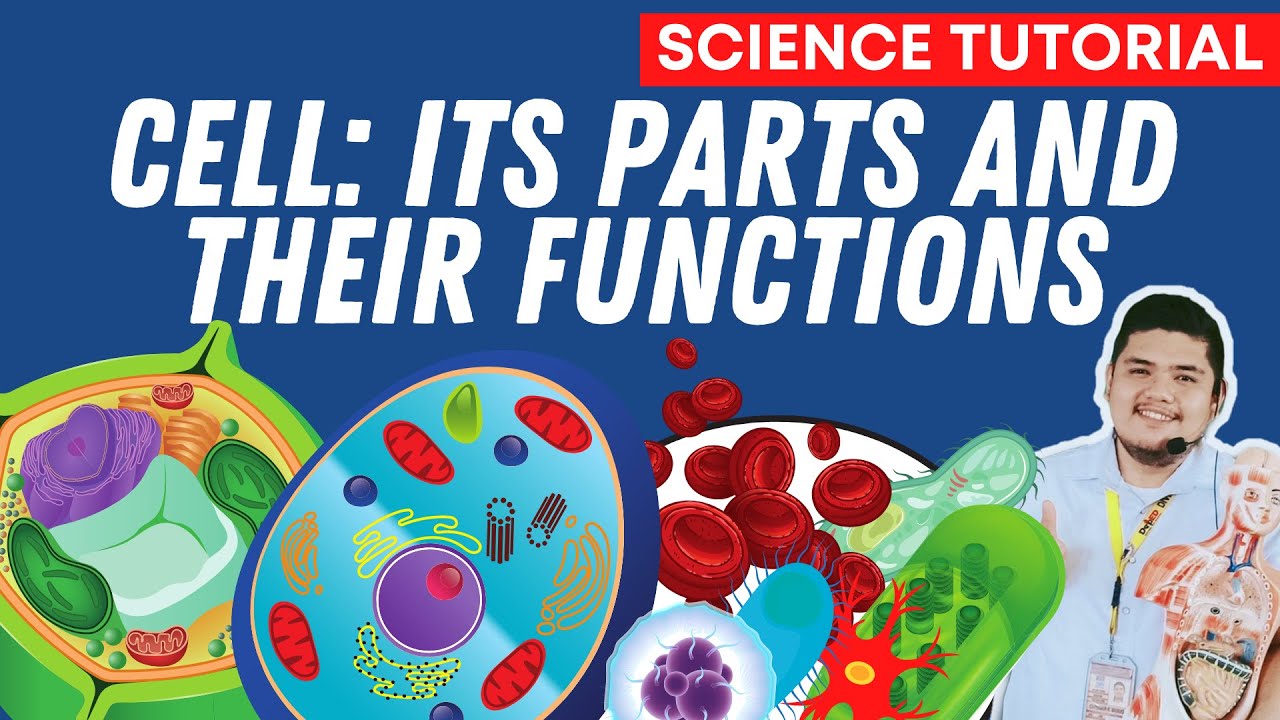Fundamental Unit of Life One Shot in 20 Mins | NCERT Class 9th Science Chapter-5 | Vedantu Class 9
Summary
TLDRThe video script is an educational session on the fundamental unit of life, the cell. It delves into the history of cell discovery, types of cells, and their structures and functions. The session explains the roles of various cellular organelles, such as the plasma membrane, nucleus, and mitochondria, and discusses concepts like osmosis, diffusion, and tonicity. It also highlights the differences between plant and animal cells, including the presence of cell walls and chloroplasts in plants. The script is designed to revise and clarify complex cellular biology topics, aiming to engage and educate the audience.
Takeaways
- 📚 The session is about the fundamental unit of life, the cell, and aims to revise the entire chapter with tips and tricks.
- 🔬 Cells are the basic structural and functional units of life, forming the structure of the body and performing life processes.
- 👨🔬 Robert Hooke first discovered the cell in 1665, but it was a dead cell observed through a self-designed microscope.
- 🌿 In 1674, Van Leeuwenhoek discovered living cells using his own microscope, marking a twist in cell observation.
- 🕵️♂️ The difference between prokaryotic and eukaryotic cells is significant, with eukaryotic cells containing various organelles.
- 🌱 The cell theory, proposed by Schleiden and Schwann in 1838-1839, suggests that all plants and animals are composed of cells.
- 🔬 The modified cell theory by Virchow states that cells arise from pre-existing cells, not spontaneously.
- 🌡 Osmosis is the movement of water through a semipermeable membrane from high to low concentration, which is different from diffusion that can occur in all states of matter.
- 💧 Hypertonic, isotonic, and hypotonic solutions affect cells differently, causing them to shrink, remain the same, or swell respectively.
- 🌿 Plant cells have a cell wall for rigidity and mechanical support, made of cellulose, which is not present in animal cells.
- 🏠 The cell nucleus is the control center of the cell, containing genetic material that instructs the cell's activities.
Q & A
What is the fundamental unit of life?
-The fundamental unit of life is the cell, which serves as the basic structural and functional unit of all living organisms.
Who is credited with the discovery of the cell?
-The cell was first discovered by Robert Hooke in 1665, although he observed a dead cell using his self-designed microscope.
What differentiates prokaryotic cells from eukaryotic cells?
-Prokaryotic cells are simpler and lack a defined nucleus and membrane-bound organelles, whereas eukaryotic cells have a well-defined nucleus and membrane-bound organelles.
What is the role of the plasma membrane in a cell?
-The plasma membrane, also known as the cell membrane, acts as the cell's outer covering, separating the cell's contents from the external environment and regulating the passage of substances in and out of the cell.
What is osmosis and how does it occur?
-Osmosis is the process by which water moves through a semipermeable membrane from an area of high concentration to an area of low concentration, and it requires the presence of such a membrane.
What is the difference between osmosis and diffusion?
-Osmosis is the movement of water through a semipermeable membrane from high to low concentration, while diffusion can occur in all states of matter and does not require a semipermeable membrane.
What are the three types of solutions in terms of their effect on cells?
-The three types of solutions are hypertonic, isotonic, and hypotonic. Hypertonic solutions cause cells to lose water and shrink, isotonic solutions maintain cell volume, and hypotonic solutions cause cells to take in water and swell.
What is the function of the endoplasmic reticulum in a cell?
-The endoplasmic reticulum (ER) is involved in the synthesis and processing of proteins and lipids. The rough ER, which has ribosomes, is involved in protein synthesis, while the smooth ER is involved in lipid synthesis and detoxification.
Why are mitochondria referred to as the 'powerhouse of the cell'?
-Mitochondria are called the 'powerhouse of the cell' because they produce ATP through the process of oxidation, which releases energy that the cell uses for various functions.
What is the role of lysosomes in a cell?
-Lysosomes contain digestive enzymes that help break down and recycle cellular waste, damaged organelles, and foreign particles within the cell.
What are plastids and what types are mentioned in the script?
-Plastids are organelles unique to plant cells and some protists. The script mentions three types: chromoplasts, which store pigments; chloroplasts, which are involved in photosynthesis; and leucoplasts, which store fats and carbohydrates.
Outlines

Этот раздел доступен только подписчикам платных тарифов. Пожалуйста, перейдите на платный тариф для доступа.
Перейти на платный тарифMindmap

Этот раздел доступен только подписчикам платных тарифов. Пожалуйста, перейдите на платный тариф для доступа.
Перейти на платный тарифKeywords

Этот раздел доступен только подписчикам платных тарифов. Пожалуйста, перейдите на платный тариф для доступа.
Перейти на платный тарифHighlights

Этот раздел доступен только подписчикам платных тарифов. Пожалуйста, перейдите на платный тариф для доступа.
Перейти на платный тарифTranscripts

Этот раздел доступен только подписчикам платных тарифов. Пожалуйста, перейдите на платный тариф для доступа.
Перейти на платный тарифПосмотреть больше похожих видео

PARTS AND FUNCTIONS OF A CELL SCIENCE 7 QUARTER 2 MODULE 3

Cells (Parts and Functions), Plant and Animal Cell | Grade 7 Science DepEd MELC Quarter 2 Module 4

Postulates of Cell Theory

Cell Theory - Biology - MCAT, AP Biology, GSCE, DAT, NEET, ACT

Secret lives of cells – Life sciences

SEL 1 (Komponen Kimia Sel)
5.0 / 5 (0 votes)
